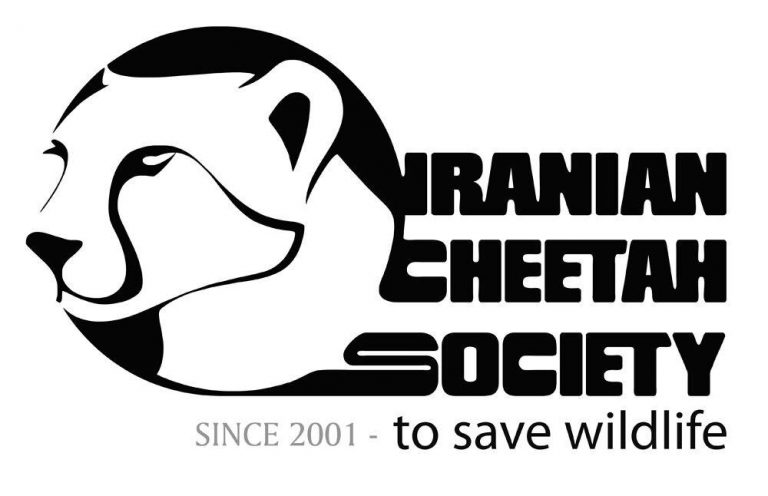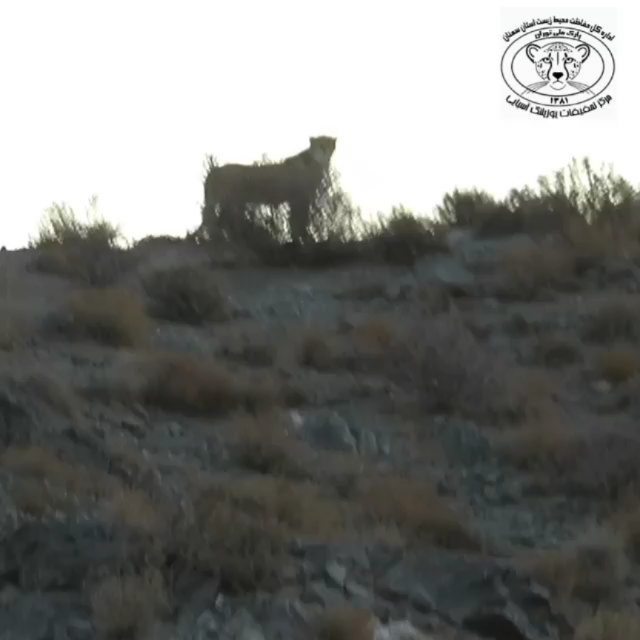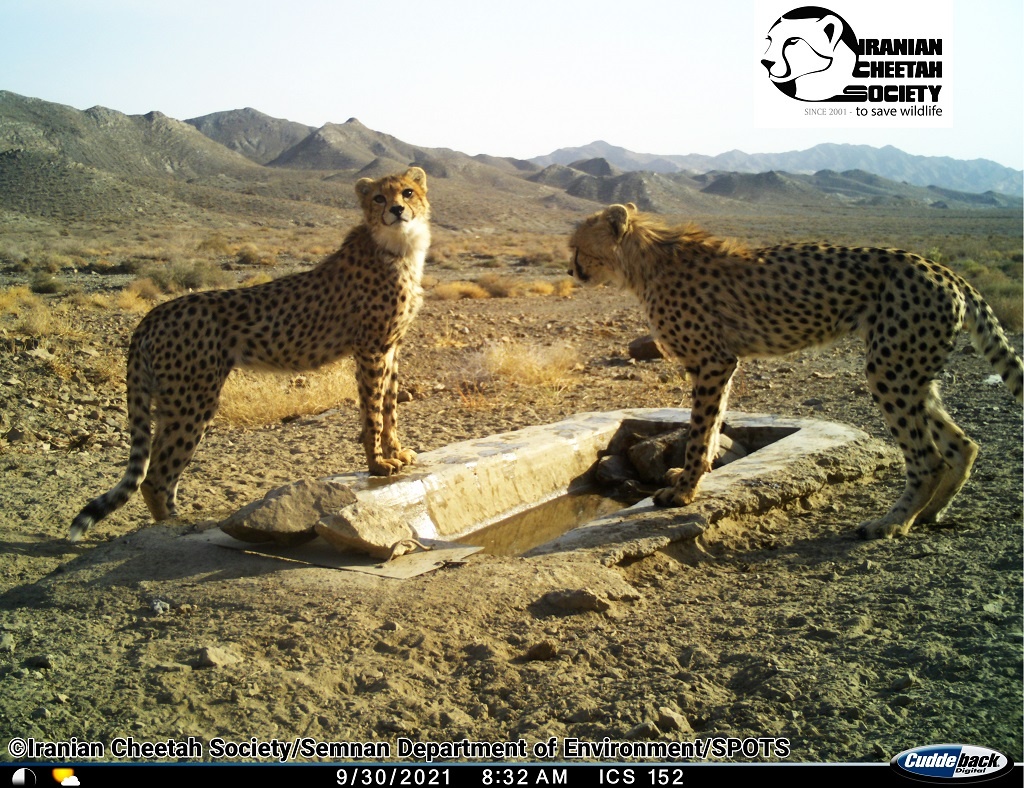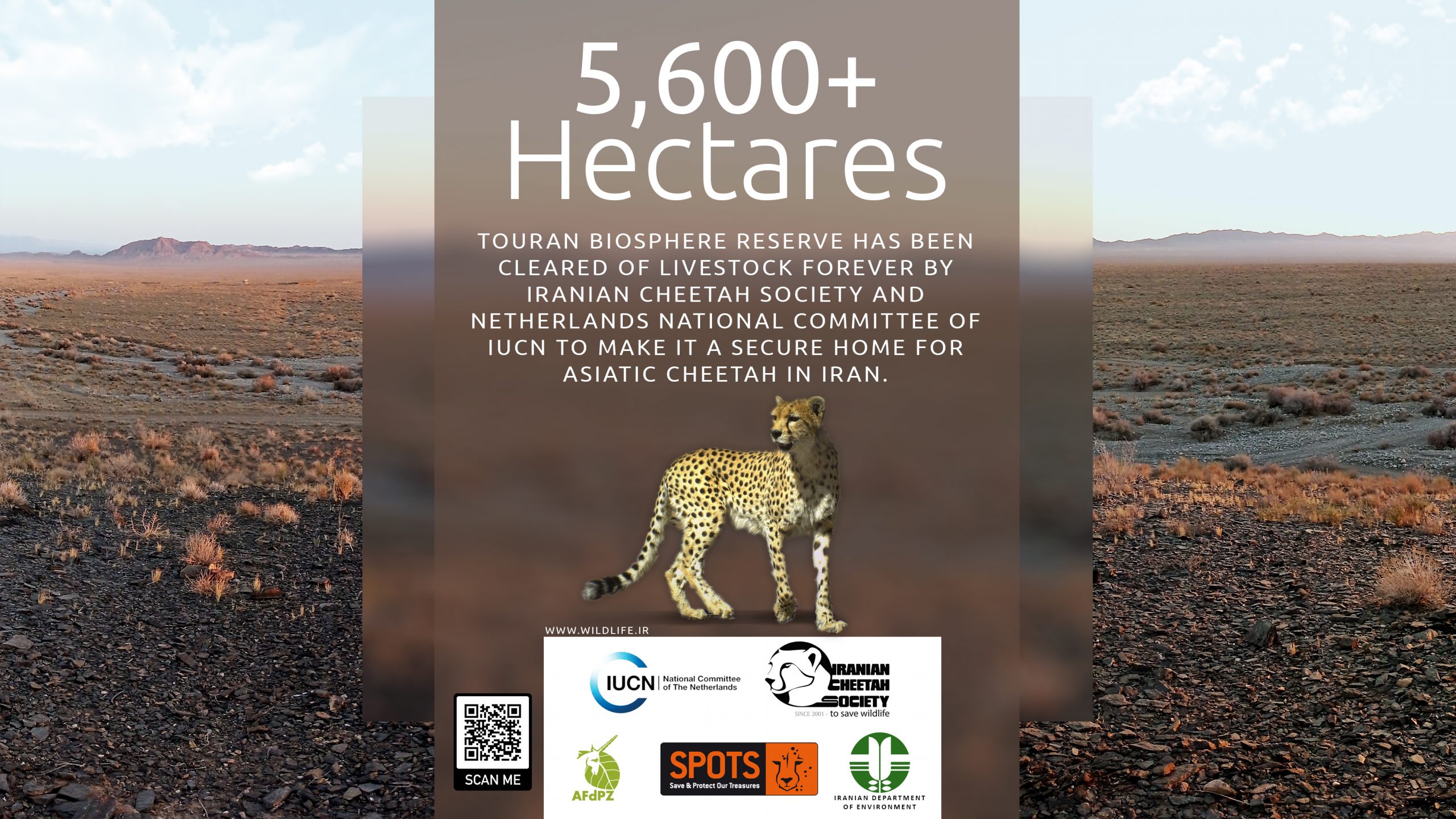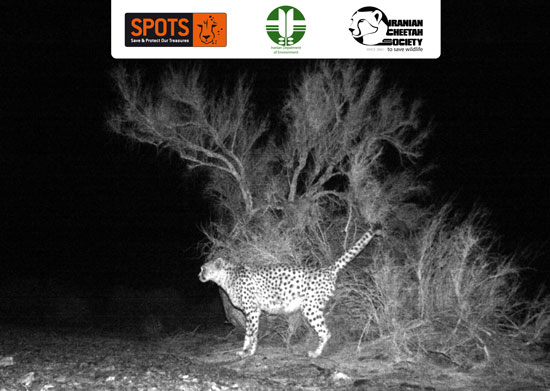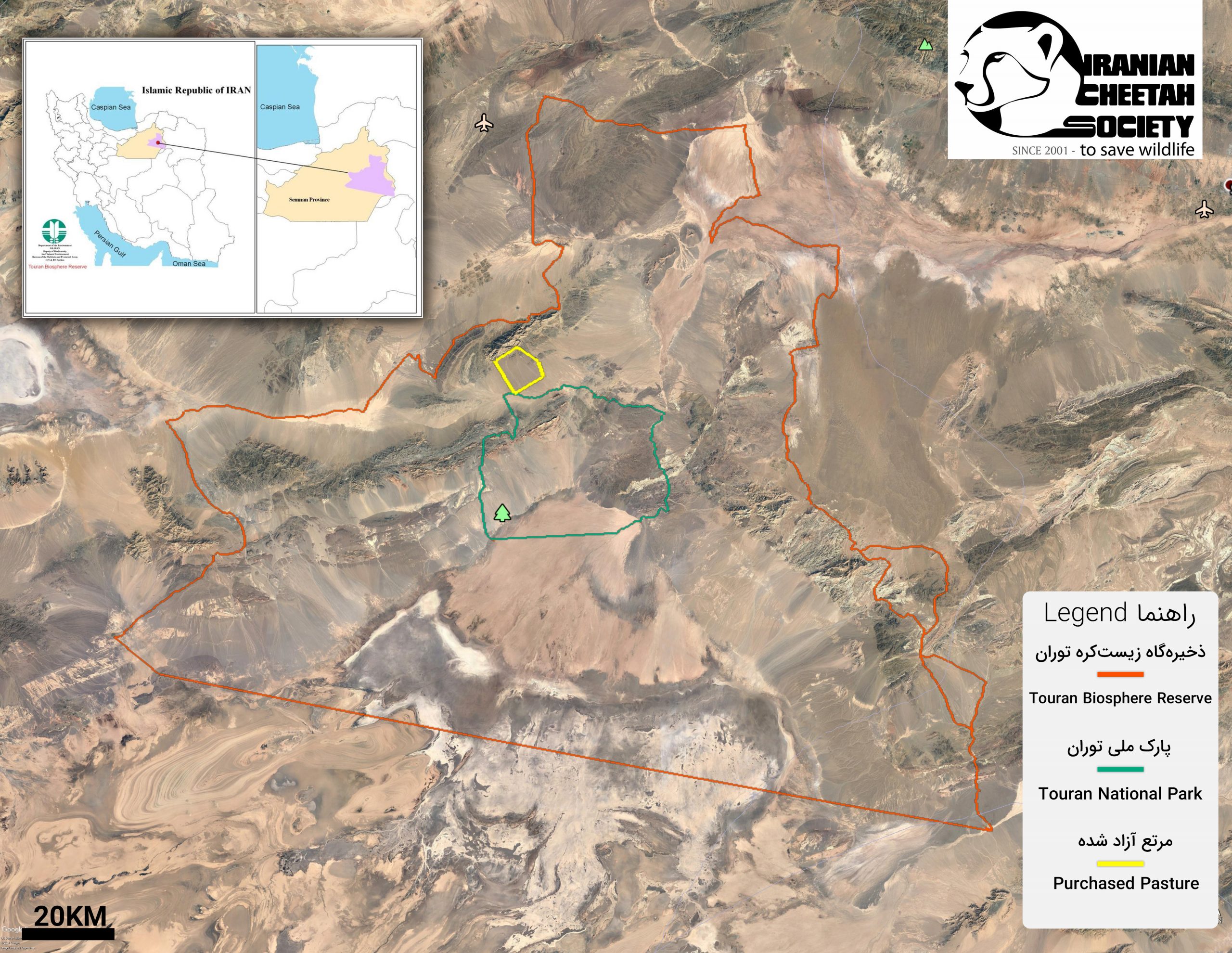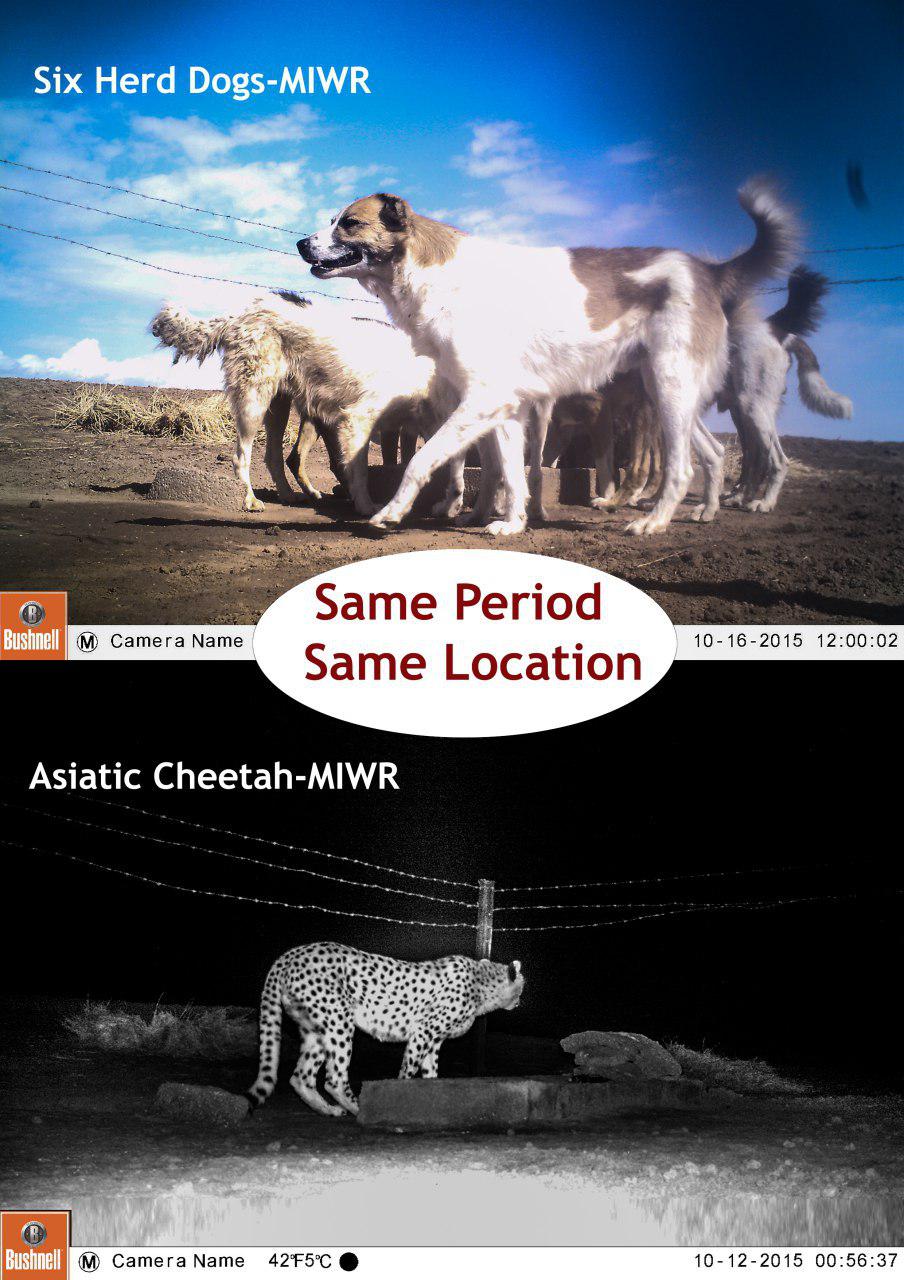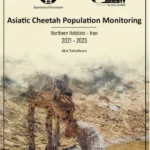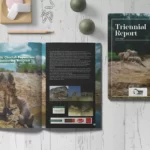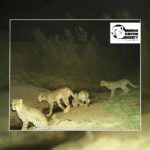Rangers of Touran National Park captured this footage from a Cheetah family in Touran Biosphere Reserve yesterday. This family was recorded previously and is known as the “Talkhab Family”.
Touran National Park
Second Asiatic Cheetah Family Recorded in Touran Biosphere Reserve (2021)
After recording a family of three, including a mother and two cubs, earlier this summer, cameras installed in Touran National Park (Part of Touran Biosphere Reserve) captured another family of three in the early fall. The mother of this new family is known as “Harb“, who was able to raise her three cubs last year. The cubs separated from this eight-year-old mother when they became adults, and Harb was able to give birth to two cubs this year as well. Cubs appear to be healthy in the pictures. All the captured images are the result of cooperation between the Iranian Cheetah Society and the Department of Environment of Semnan Province.
The record of two families of Asiatic Cheetah in Touran raises the hope of preserving the few remaining populations of this valuable species.
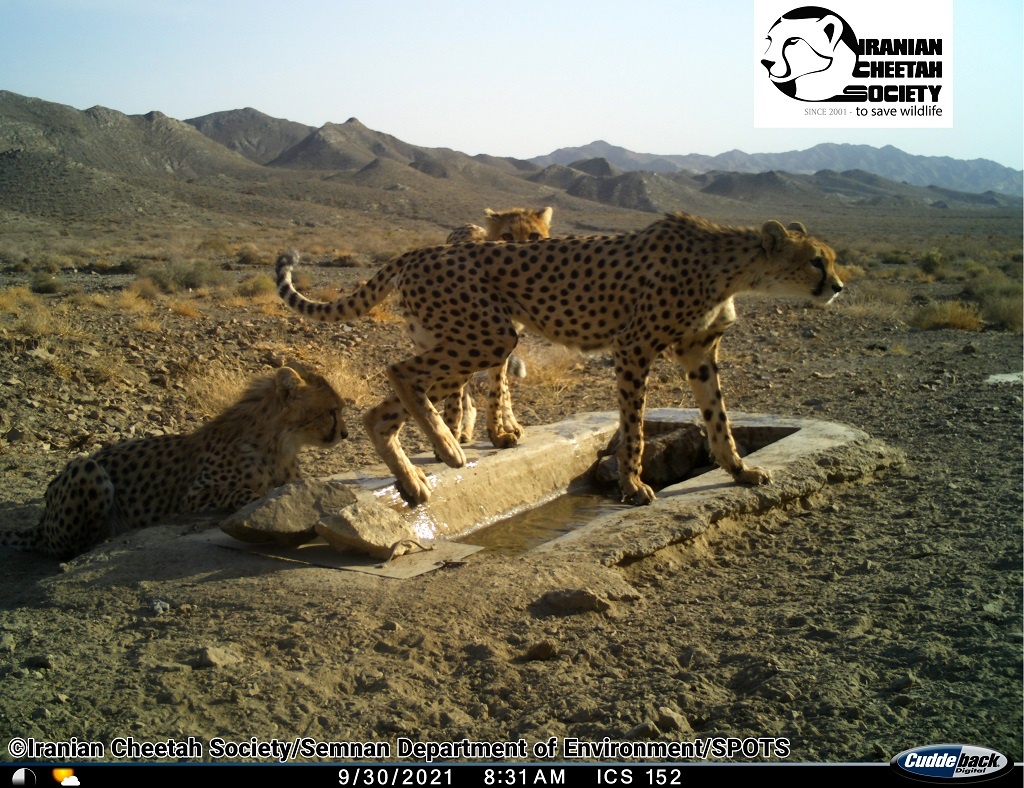
Asiatic Cheetah Cub
Livestock removed from a 5,600+ hectares area to make it a secure home for Asiatic Cheetah
Conservation is a complicated field that could differ with different situations and the target species. These complication gets higher when the local people and their interests are involved in a project. One of the biggest enigmas for conservationists is creating a win-win situation. Therefore, they always need to assess the situation and use the previous experiences with an open mind.
Iran is home to the last wild population of Asiatic Cheetahs in the world. Two areas have always been of importance; Miandasht Wildlife Refuge and Touran Biosphere Reserve. Due to ICS investigations, it is clear that grazing rights are an endangerment for cheetahs in these areas. With the help of the Netherlands’ IUCN National Committee, we were looking for an appropriate and efficient solution for reducing the overgrazing pressure of livestock in the cheetah’s habitat. The initial idea was to relocate herders outside the national park to secure critical seasons (i.e., winter and spring) for the cheetah and decreasing livestock overgrazing pressure on the area’s fragile rangelands to provide resources for wild ungulates.
As the project furthered, we found out that the livestock grazing permission prices have doubled up. This made the available budget insufficient. Thus, the negotiations for buying all the available permits didn’t work out at the moment. Hence, the ICS came to an agreement with the DoE of Semnan province so they would pay for the rest of the budget.
The failure in providing the needed budget until 2017, reduction of Rial value, and increasing inflation made the ICS change the project location. After contacting other provinces’ Departments of Environment that host Cheetah and coordinating with the Conservation of Asiatic Cheetah Project (CACP) and the DoE of North Khorasan request, ICS finally relocated this project to this province. Again, the process of buying the grazing permits in the Miandasht Wildlife Reserve started, but because of the government budget allocation, the prices raised again, and once more, the project came to a stop.
In 2018 and after management changes in Semnan province, ICS reconsidered the Touran National Park for the project again. Finally, the negotiations with one of the stock owners were going according to the plans, and even the budget was enough this time. Still, unfortunately, because of the official technicalities, the project remained unfinished.
In 2020 the ICS and DoE both separately started corresponding with the Department of Forests and Rangelands and the Iranian parliament to discuss law enforcement’s absence, which never happened because of the Covid-19 pandemic.
Meanwhile, the ICS tried to maintain the agreement with the stock owner. Due to the one-year pause between the agreement, the price of grazing permits doubled again; we feared we would not be able to finalize the deal.
But we succeeded! We finalized our agreement with one of the most important permission owners in Touran Biosphere Reserve. With the revocation of the exploitation permit in the northern edge of Touran National Park, an area of 5,600 hectares will be permanently empty of livestock. This permit has covered 498 livestock.
Although this project was postponed due to unforeseen events, it brought us the same amount of lessons learned and ultimately ended in an impressive end.” We would like to thank Netherlands’ IUCN National Committee Land Acquisition Program for their commitment to make this a success. Because of our joint efforts, an important area has been secured for the next generation of Asiatic Cheetah in one of the key reserves.
Creating a Livestock-Free Wildlife Refuge to Safeguard the Critically Endangered Asiatic Cheetah
The project “Securing Touran National Park for Asiatic Cheetahs” was officially funded by IUCN NL Land Acquisition Program in August 2014. The initial goal was to lease ca. 516 km2 of Turan National Park from grazing permit owners and securing critical seasons (i.e., winter and spring) for the Asiatic Cheetah and its prey species. The project started positively but experienced a series of unfortunate setbacks along the way, which has protracted the project for years.
Ultimately, an amendment was signed by ICS and IUCN NL to authorize the relocation of the project in 2017. This relocation was supposed to help ICS focusing on work rather than corruption and conflicts. Based on the amendment, the project title officially changed to “Creating a Livestock-Free Wildlife Refuge to Safeguard the Critically Endangered Asiatic Cheetah in Northern Iran.” This project is still ongoing in ICS, which is prioritized in the yearly work plan.
This year, IUCN NL celebrates the 20th anniversary of the IUCN NL land acquisition fund, which allowed over 100 NGOs to protect and connect the – often fragmented – habitats of endangered species. Stories of these local partners and their conservation efforts are presented in an extensive anniversary report. ICS has also shared its experiences during this complex project in the anniversary report.
You can download the “Anniversary report: two decades of land acquisition for conservation” from the box below.
Further reading:
Learn more about Land Acquisition Fund on the IUCN NL website
Read more about the 20th Anniversary report of land acquisition for conservation
.
